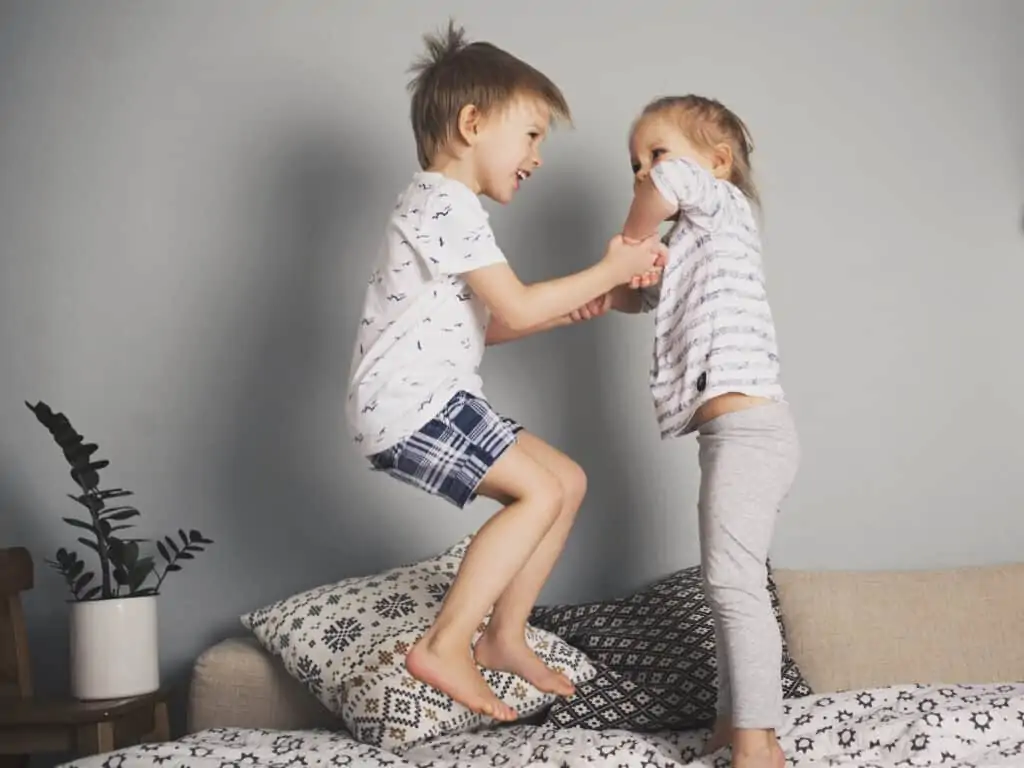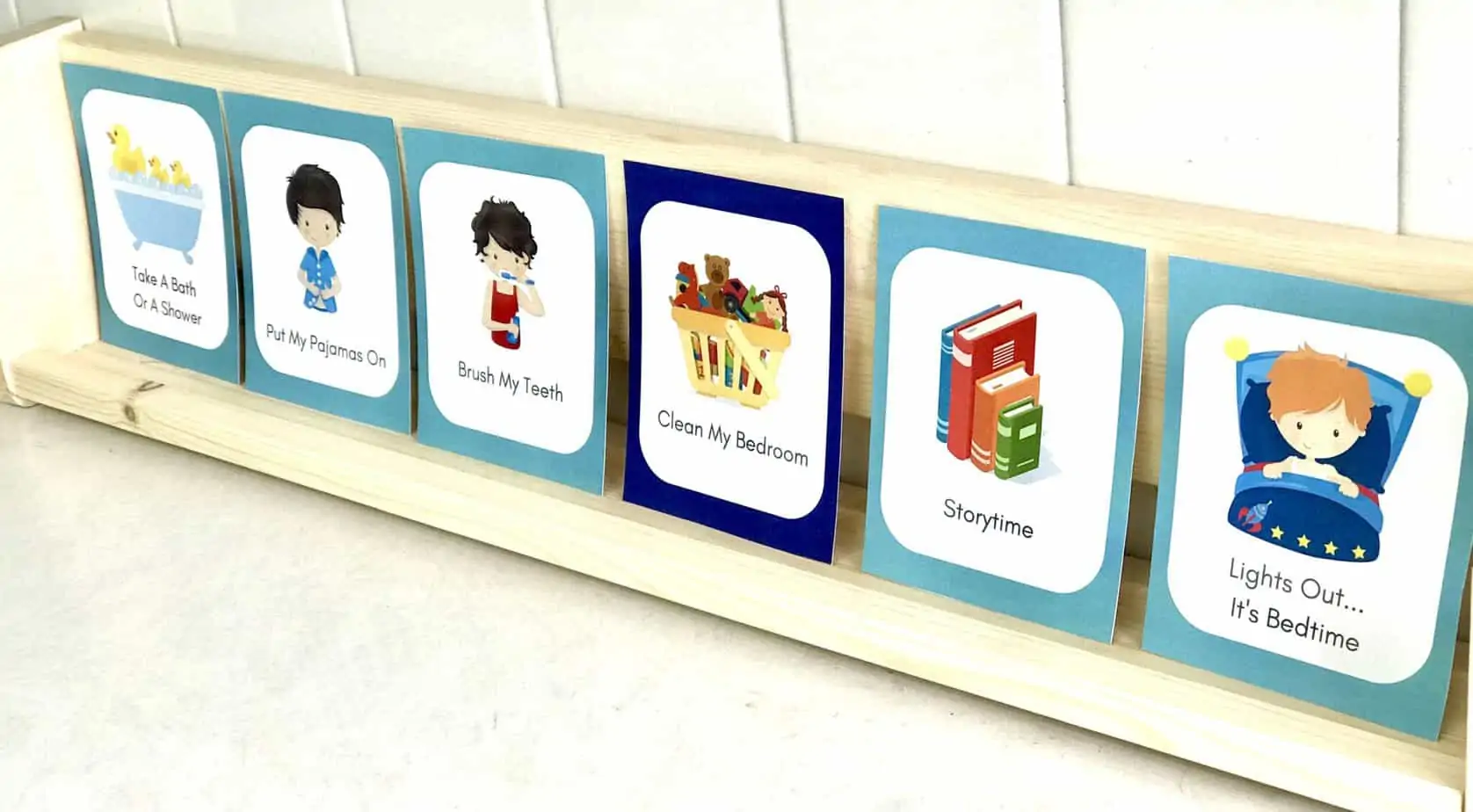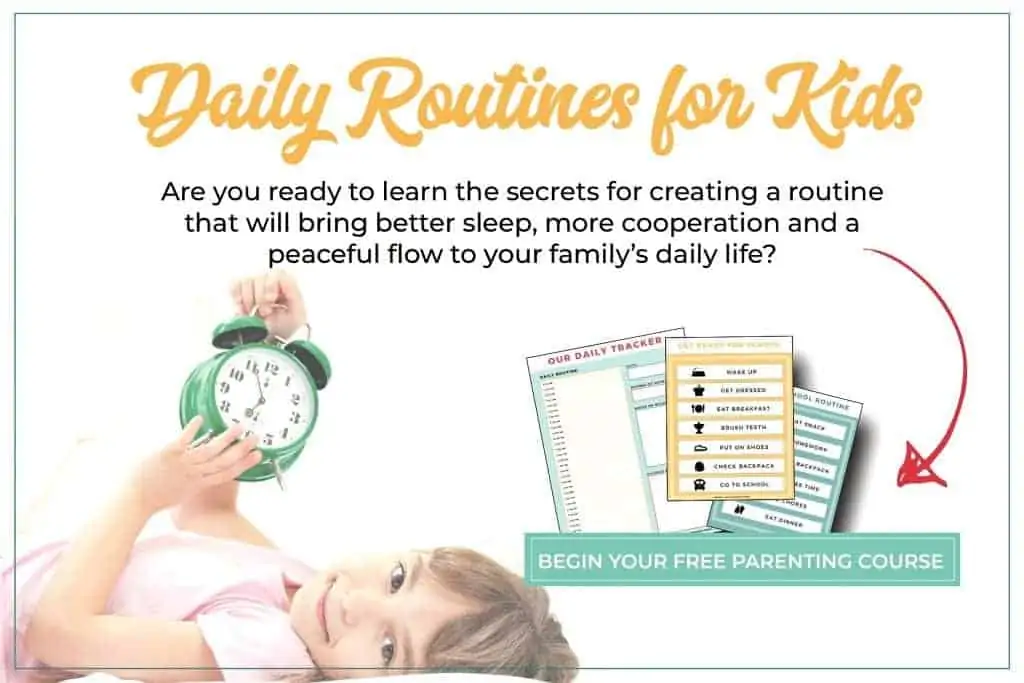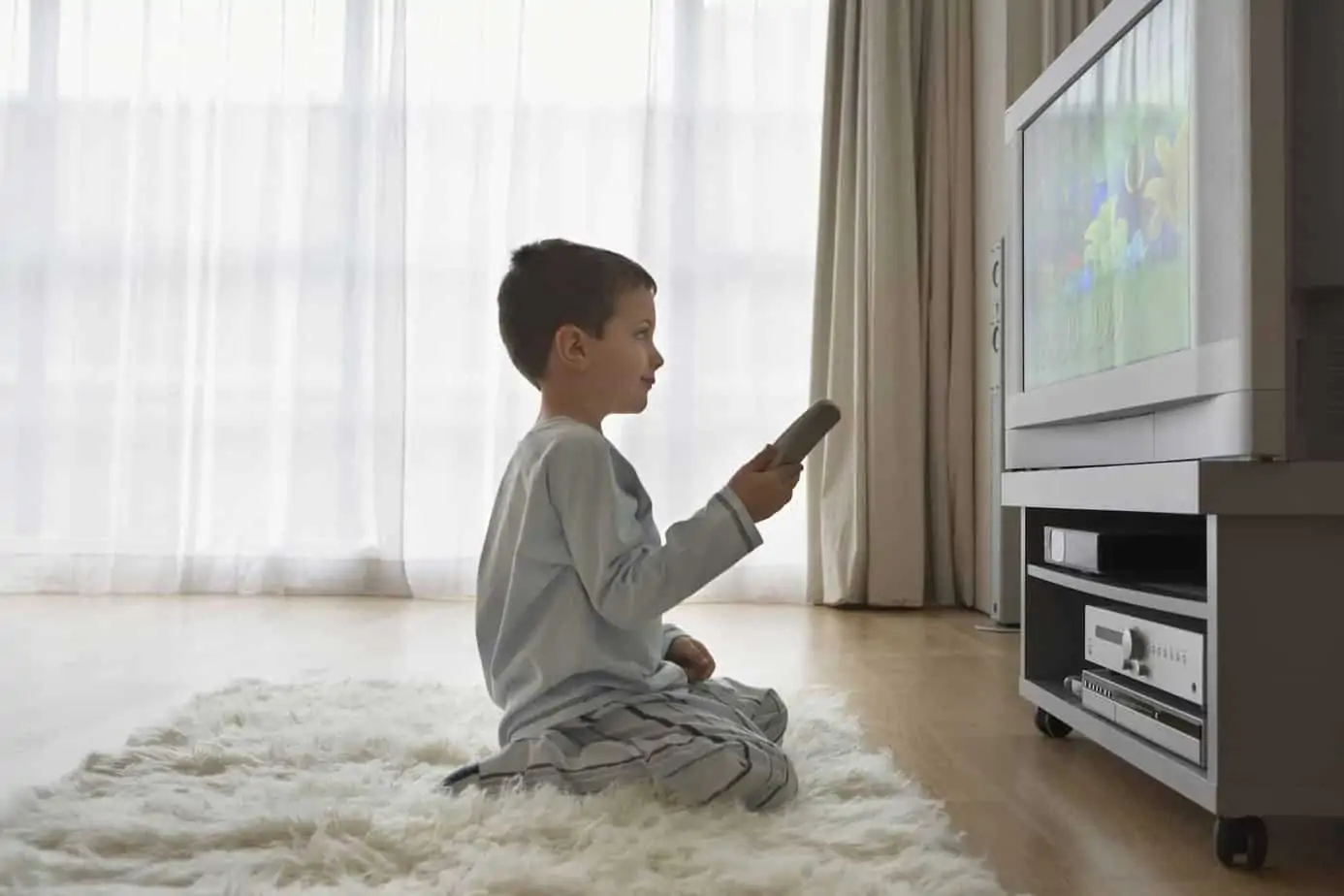Learn tricks to tackle the most common bedtime battle; when your child doesn’t or won’t go to bed at night. 5 proven strategies for a successful bedtime routine, how to use routine cards properly, and getting your child to sleep without a fight. But, if you need pre-made routines to last you through elementary school, check out Mastering Sleep & Schedules.

Tackling a Common Bedtime Battle: When Your Child Won’t Go to Bed at Night
Bedtime is the last home stretch of the night before you can sit down, put your feet up, binge on Netflix, have a glass of wine and relax however you choose.
But to get there, sometimes it can feel like a marathon, or worse, trip to the dentist’s office for an unpleasant procedure.
Kids are notorious for kicking it up a notch when they’re supposed to be drifting off to sleep.
I know how it goes.
With three kids, bedtime can be the most trying part of my day if they’re asking me to check under the bed or in the closet one more time, for another hug or think their bed is a trampoline for acrobatics.
Thankfully, it only happens rocks our nights once in a while but I’m certain, without our daily routine, it’d happen a lot more.
When we’re off track at night, I can usually pinpoint the part of the day we got off track because – you guess it – it always has to do with their routine.
Yes, the long preparation for bedtime starts first thing in the morning.
It starts with a routine.
Why Your Bedtime Routine Starts First Thing in the Morning
Kids who use routines have been shown to have better nighttime sleep, easier time falling to sleep and less wake up times at night.
Not to mention, during the day, parents who use a routine see more cooperation and less defiant behavior with their children. Transitions are smoother, they’re less likely to pitch a fit when it’s time to leave somewhere fun or run errands.
Really, having a routine is a win-win for parents, and kids (especially at bedtime!)
Try this for an Easier Routine.
We use these printable routine cards for boys and girls with all our kids and it’s made a complete 180 in our home and with better behavior and our bedtime routine.
Print the out, (laminate if you can), arrange the cards in the order of your day and basically, your child will walk themselves through your daily routine without any reminders or nagging about what they need to do next.It also makes bedtime into a fun game by following the steps in order.
If you need help with your routine, Mastering Sleep & Schedules is the ultimate guide to tackling sleep, a daily routine and transition times like going from multiple naps down to one and then done. Includes instant access to 40+ sample routines that can work wonders for your family too.
5 Proven Solutions to a Successful Bedtime Routine
1. Makeover Your Bedtime Routine
Your bedtime routine means you start unwinding at least one hour before lights out. You want to remove all stimulation and high-energy activities so kid’s little bodies have time to slow down and relax. Your bedtime routine should be quiet, relaxing and a time for connection.
Here’s a sample of our bedtime routine to get you started:
- After dinner, begin winding down by doing homework, reading, playing quietly, a puzzle, etc. We stay away from screens and high-energy activities otherwise it’s like shaking a can of soda and watching it explode.
- Bath or showers
- Change into pajamas
- Brush teeth and get water for their rooms
- Read books together or they play quietly for 10 – 15 minutes with lights on in their rooms
- Potty and sound machines get turned on (I consider white noise machines to be essential to kid’s sleep!)
- My husband and I do bedtime together so we each have a couple minutes with the kids alone to say goodnight, snuggle, chat, etc.
- Lights out
My kids all use this white noise sound machine in their rooms to help them drift off to sleep. I even pack them when we travel because it soothes them to sleep quicker.
I included all of the exact routines we used with my twins and then my third child is my book, Mastering Sleep & Schedule so you can follow the same schedule that’s worked amazing for our family of five.
2. For Kids Who Pop in and Out of Bed Frequently
This bedtime works well for toddlers and kids who are young and need Mom and Dad to tuck them in, and will stay in bed.
For kids who struggle with coming out of their room several times, you can apply this rule to bedtime to help:
- The child can play quietly in their room with the lights on before bedtime
- They have one chance to come out of the room to say goodnight to Mom and Dad when it’s bedtime, and once they do this, it’s lights out.
- There’s no more coming out of their rooms to get a drink or ask a question once the lights are out or the door may be closed.
A stoplight clock is also helpful for kids to learn when it’s bedtime and awake time so they stay in bed longer and don’t jump in and out of bed after you’ve already tucked them in.
3. Let Kids Wrap Things Up Before You Start the Bedtime Routine
If your kids are finishing an activity, such as a chapter in their book, a puzzle, or coloring sheet, then let them wrap it up in a reasonable amount of time.
This may mean giving them five extra minutes to tidy up the activity. It’s OK to be flexible in this scenario because if you pull them out of the activity before they finish, you’re asking for a battle of wills battle and there will be no peaceful good night in your foreseeable future.
You can set an alarm for five minutes so they can see how much time is left and wrap up their activity quickly.
4. Kids Think They’ll Miss Out When They Go to Sleep
Stalling before bedtime could be your child feeling like they’re missing out on fun stuff that happens after you’ve turned off the lights. Laying in a dark, quiet room is no fun, but if they think Mom and Dad are doing something exciting downstairs, they want to be a part of it too!
Gently reassure them that you won’t be doing anything fun. When they hear you have to fold laundry, clean the house and pick up, they won’t have any fear of missing out.
When they know you’ll be doing chores or something not-so-fun, they’ll have an easier time falling asleep when they know they aren’t missing out.
5. Setting the Right Bedtime Is Crucial to Your Bedtime Routine
If your kids are stalling because they’re still wide awake, it might be time to reevaluate the schedule for the day:
- are they napping too long or too late,
- getting enough physical activity to wear them out or
- is the bedtime you’ve set too early for them to be tired enough to fall asleep in 15 or less minutes.
It all starts with how much sleep your child needs.
According to the American Academy of Pediatrics (AAP) here are the current sleep recommendations for kids at different ages:
- Babies 4 – 12 months: 12-16 hours of sleep per 24 hours (including naps)
- Kids 1 – 2 years: 11-14 hours of sleep per 24 hours (including naps)
- Kids 3 – 5 years: 10-13 hours of sleep per 24 hours (including naps)
- Kids 6 – 12 years: 9-12 of sleep hours per 24 hours
- Teens 13 – 18 years: 8-10 hours of sleep per 24 hours
Remember, bedtime battles are very common with young kids… but not permanent.
Need a little extra help starting or adjusting your daily routine? Here’s a FREE Course that will help you take control & bring more peace to your home.
This Might Help Too…
- 9 Tips to Make Bedtime Easier: Get to Bed Without a Battle
- 7 Ways to Beat Bedtime Stalling with Young Kids
- How to Establish a Peaceful Bedtime Routine for Your Baby
- Sleep Strategies for a Good Night’s Sleep & Daily Routines for Kids
Want even more?
Shop All Parenting Resources
Shop all of our parenting resources from self-regulation tools and managing big emotions to building self esteem and confidence. There are resources for all seasons of life!










